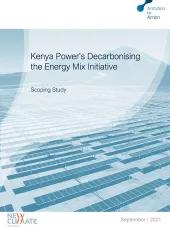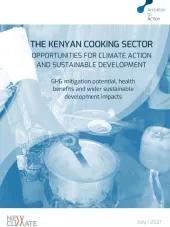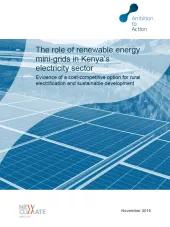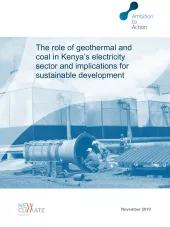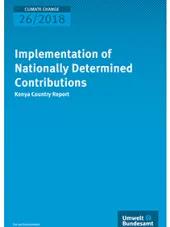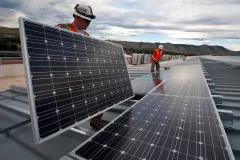The objective of this report is to synthesize the analysis and results from analytical and capacity support activities undertaken as part of the “Ambition to Action” (A2A) project in Kenya between March 2017 and December 2019. The insights aim to inform policy planning in the Kenyan electricity sector and to feed into the discussions around more ambitious climate targets for successive NDCs, aligned with the country’s sustainable development agenda, and the long-term strategy.
Conclusions:
The synthesis report focuses on the electricity sector, reflecting the sector’s importance for the Kenyan NDC and hence for the efforts to decarbonise the economy in the long term. As such the report discusses Kenya’s objectives for climate change and sustainable development, examines the electricity sector’s emission pathways and implications for sustainable development and climate change targets, maps out alternative technology pathways and analyses the status of mainstreaming climate change in sector processes. The report concludes with the following sector specific findings and recommendations:
- The principal measure to ensure that electricity sector development remains Paris compatible in Kenya is the avoided installation of coal capacity and the restricted use of additional natural gas capacity, with a simultaneous expansion of other electricity supply options, such as geothermal power, renewable energy mini-grids and energy efficiency improvements. These options promise to deliver universal electricity at low cost while maximising other sustainable development objectives, including job creation and clean air.
- Given that previous climate change documents have been significantly misaligned with real developments and planning in the electricity sector, and that this proves a considerable barrier for climate change mitigation planning, the NDC update process should be approached as an opportunity for realignment.
- Achieving enhanced alignment between electricity supply and climate change planning processes can be improved by (i) ensuring the participation of climate policy planning representatives in electricity sector planning processes, and vice versa, (ii) aligning climate and electricity sector planning documents with regards to emission baselines and targets as well as (iii) integrating evidence on broader sustainable development impacts into electricity sector planning processes.
- Finally, the development of a Long-term Strategy as requested under the Paris Agreement that is aligned with the Agreement’s long-term temperature goal can provide a clear vision for the development direction of Kenya’s economy and society, as well as certainty and transparency to sector stakeholders.



